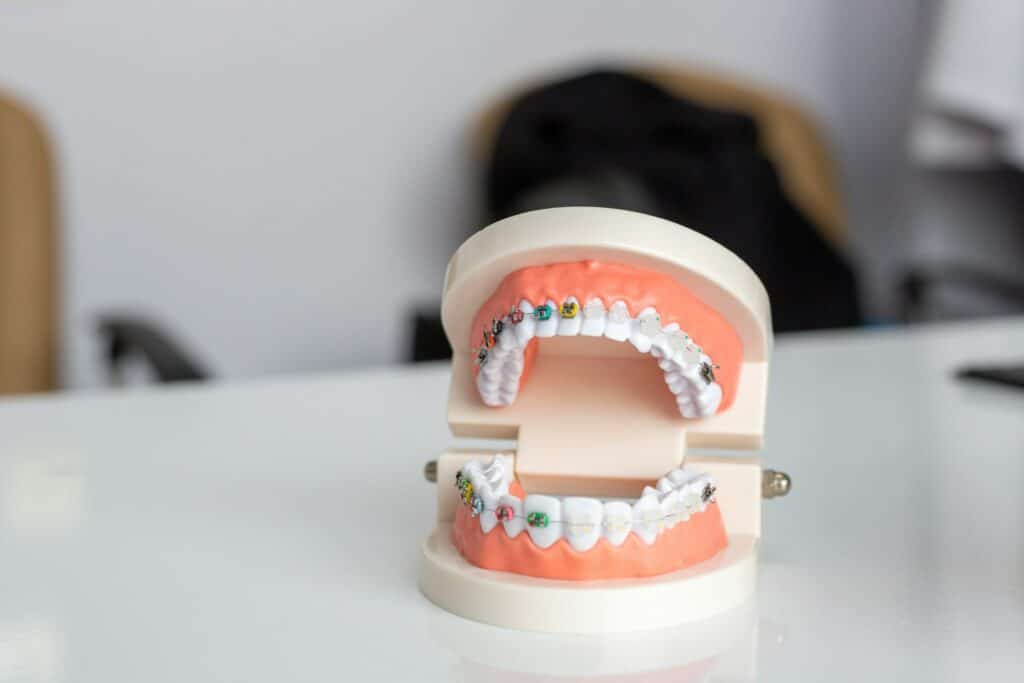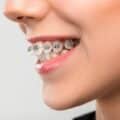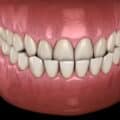An overbite is a common dental issue where the upper teeth overlap the lower teeth when you bite down. This misalignment can cause various problems, both functional and aesthetic. Have you ever noticed discomfort when chewing? Or perhaps you’ve felt insecure about your smile? These are just a few potential impacts of untreated overbite.
If left unaddressed, an overbite can lead to tooth wear, jaw pain, and even difficulties in speaking. It can also affect your facial appearance, making your features seem less balanced. These issues highlight the importance of understanding your options for treatment.
When it comes to treating an overbite, two primary options are traditional braces and clear aligners. Traditional braces use metal brackets and wires to shift teeth into their proper positions, while clear aligners offer a more discreet solution made from custom plastic trays.
So, which is the best choice for you? While both treatment methods can effectively correct overbites, the right option will depend on your individual needs, preferences, and lifestyle. This guide is vital for anyone considering orthodontic treatment, as making an informed decision can lead to a healthier smile and improved confidence.
Traditional Braces
Overview of Traditional Braces
Traditional braces consist of three main parts: brackets, wires, and bands. The brackets are small metal or ceramic pieces attached to the surface of each tooth. Wires connect the brackets, applying pressure to move your teeth gradually into the correct position. Bands may also be used to hold the brackets firmly in place or to adjust specific parts of your bite. Together, these components work to shift your teeth and jaw over time, helping to correct alignment issues like overbites.
Types of Braces
Metal Braces
Metal braces are the most common type. They are made of high-quality stainless steel, making them durable and effective for all types of orthodontic issues, including severe overbites. Metal braces are visible, but they remain a popular choice due to their strength and reliability.
Ceramic Braces
These braces work the same way as metal braces but use clear or tooth-coloured brackets. Ceramic braces are less noticeable, which makes them a more aesthetically pleasing option for some people, especially adults. However, they can be more fragile than metal braces.
Lingual Braces
Lingual braces are attached to the back of your teeth, making them completely hidden from view. While they offer the same effectiveness as traditional braces, they are more difficult to clean and adjust. Lingual braces are a good option for those who want the benefits of braces without the visible appearance.
Advantages of Traditional Braces
Effectiveness for Complex Overbites
One of the biggest advantages of traditional braces is their ability to handle even the most severe overbites. The combination of brackets, wires, and bands allows orthodontists to make precise adjustments to both teeth and jaw position. If you have a complex case, traditional braces are likely your best option for achieving the results you need.
Durability and Longevity
Traditional braces are made from strong materials that can withstand daily wear and tear. Whether you choose metal or ceramic braces, you can be confident they will last throughout your treatment. Unlike clear aligners, which can crack or need replacing, traditional braces stay in place and remain effective until the job is done.
Lower Cost
In general, traditional braces are more affordable than clear aligners. While the exact cost can vary depending on the length and complexity of your treatment, metal braces tend to be the most budget-friendly choice. For many patients, this makes them the preferred option, especially when compared to the higher price of clear aligners like Invisalign.
Disadvantages of Traditional Braces
Appearance and Visibility
One of the main drawbacks of traditional braces is their visibility. Metal brackets and wires can be especially noticeable, which can be a concern for adults or teens who are self-conscious about their appearance. While ceramic braces offer a more discreet option, they are still visible to some degree. If aesthetics are a priority, you may want to consider clear aligners.
Potential Discomfort and Irritation
Traditional braces can cause discomfort, particularly after adjustments. It’s common to experience soreness in the teeth and gums, especially in the first few days. The metal components can also rub against the inside of your mouth, leading to irritation or mouth sores. While orthodontic wax can help, this is something to keep in mind if you have a low tolerance for discomfort.
Maintenance and Cleaning Requirements
Braces require extra care when it comes to cleaning and maintaining oral hygiene. Food can easily get trapped in the brackets and wires, making brushing and flossing more challenging. You’ll need to be diligent about keeping your teeth clean to avoid plaque build-up and staining. Additionally, certain foods—like hard, sticky, or chewy items—should be avoided to prevent damage to the braces. This can make mealtime a bit more complicated during treatment.

Clear Aligners
Overview of Clear Aligners
Clear aligners are a modern orthodontic treatment that uses advanced technology to gradually move teeth into their correct position. Each set of aligners is custom-made using a 3D scan or mould of your teeth, ensuring a precise fit. The aligners are crafted from clear, medical-grade plastic, making them almost invisible when worn. Over time, as you switch to new aligners (typically every one to two weeks), your teeth gradually shift closer to the desired alignment, including correcting overbites.
Types of Clear Aligners
Invisalign
One of the most well-known clear aligner brands, Invisalign uses cutting-edge technology to create a series of custom aligners. It is widely available in New Zealand and is known for treating mild to moderate orthodontic issues effectively.
SureSmile
Another clear aligner option, SureSmile, uses a similar approach to Invisalign but is often preferred for more complex cases. It provides advanced 3D imaging for highly accurate treatment planning and is gaining popularity in the orthodontic field.
Local Alternatives
There are also local clear aligner providers in New Zealand, which may offer competitive pricing or treatment tailored to the unique needs of Kiwi patients. Some of these alternatives provide similar results to the international brands but may be more accessible depending on your location.
Advantages of Clear Aligners
Aesthetics and Discretion
One of the biggest selling points of clear aligners is their discreet appearance. Unlike traditional braces, which are highly visible, clear aligners are nearly invisible when worn. This makes them an appealing option for anyone concerned about the appearance of metal braces, especially adults and teenagers who want a more subtle treatment. You can go about your day without worrying that others will notice you’re undergoing orthodontic treatment.
Comfort and Convenience
Clear aligners are designed with comfort in mind. Without metal brackets or wires, they tend to cause less irritation to the inside of your mouth. Another major benefit is that they are removable, allowing you to take them out while eating, drinking, or brushing your teeth. This flexibility adds convenience and makes everyday activities easier compared to traditional braces, which stay on throughout the entire treatment period.
Easier Cleaning and Maintenance
Keeping your teeth clean during orthodontic treatment can be a challenge, but clear aligners make this much simpler. Since you can remove them, it’s easy to brush and floss your teeth as you normally would, without needing to navigate around brackets and wires. Cleaning the aligners themselves is also straightforward—simply rinse them with water and use a gentle cleanser to keep them fresh. This ease of maintenance helps reduce the risk of plaque build-up and other oral health issues that can occur with traditional braces.
Disadvantages of Clear Aligners
Suitability for Complex Overbites
While clear aligners can effectively treat mild to moderate overbites, they may not be suitable for more complex cases. If your overbite is severe, traditional braces might be a better option. Braces offer more control over the movement of teeth and jaw alignment, which can be crucial in addressing complicated orthodontic issues. Your orthodontist will assess whether clear aligners are the right choice for your specific condition.
Higher Cost
In general, clear aligners tend to be more expensive than traditional braces. The custom-made aligners and advanced technology involved in the treatment plan contribute to the higher cost. While the convenience and aesthetics may make this investment worthwhile for some, others may find the price point to be a barrier. It’s important to weigh the benefits against your budget and consider whether the additional cost is worth the extra comfort and discretion.
Potential for Aligner Shifting or Loss
Since clear aligners are removable, they come with the added responsibility of keeping track of them. It’s easy to misplace an aligner or forget to wear it as often as prescribed, which can slow down your treatment progress. You’ll need to be diligent about wearing the aligners for 20 to 22 hours a day and making sure they’re always stored safely when not in use. Losing an aligner could also mean additional costs and time to replace it, so this is something to consider if you prefer a more hands-off approach.
Factors to Consider When Choosing Between Braces and Clear Aligners
Severity of the Overbite
The complexity of your overbite plays a crucial role in deciding between traditional braces and clear aligners. For mild to moderate overbites, clear aligners may be effective in gradually moving the teeth and correcting alignment. However, if your overbite is more severe, traditional braces may offer a more robust solution. Braces provide greater control over the movement of both teeth and jaws, which is often necessary for complex cases. An orthodontist will assess your overbite and recommend the treatment that can best address the specific issues with your bite and alignment.
Age and Lifestyle
Age and lifestyle factors are key when selecting an orthodontic treatment. Children and teens may benefit from traditional braces, which are fixed in place and do not require the same level of responsibility that comes with clear aligners. Teens, however, might prefer clear aligners for aesthetic reasons, but it’s important to consider if they are committed to wearing the aligners consistently.
For adults, the choice may come down to lifestyle and professional considerations. Adults may lean towards clear aligners due to their discreet appearance and the ability to remove them for social or work events. If you have a busy lifestyle and are frequently on the go, consider how well each option fits with your daily activities. Braces may require more frequent adjustments and care, while aligners offer flexibility, but with the added responsibility of consistent wear.
Aesthetic Preferences
Appearance is one of the most significant factors for many people when deciding between braces and clear aligners. Traditional braces are visible, even if you opt for ceramic or lingual braces, which are designed to be less noticeable. If the look of metal brackets is a concern, clear aligners offer a nearly invisible alternative, which is why they are often favoured by those who want a more discreet treatment option.
However, it’s important to weigh aesthetics against effectiveness. While aligners offer a subtle appearance, they might not be the best choice for severe overbites, meaning you may need to prioritise function over aesthetics depending on your case.
Cost and Insurance Coverage
Cost is a significant consideration for most patients. In New Zealand, traditional braces generally come at a lower price compared to clear aligners, though the exact costs can vary based on the complexity of the treatment and the length of time you’ll need them.
Clear aligners, being a newer and more technologically advanced option, often carry a higher price tag. However, they offer benefits that some patients may find worth the extra investment. It’s important to check your insurance coverage, as some policies may cover part of the cost for both braces and aligners. There may also be financing options available, allowing you to spread the cost over the duration of the treatment. Discussing your budget and insurance with your orthodontist can help you make the best decision for your financial situation.
The Importance of Consulting with a Registered Orthodontist
Orthodontists specialise in correcting dental alignment issues, offering expert guidance on the best treatment options for overbites, whether it’s traditional braces, clear aligners, or a combination.
Benefits of Consulting with a Registered Orthodontist
Personalised Treatment Plan
Orthodontists customise treatment based on the severity of your overbite, age, and lifestyle, ensuring a tailored and efficient approach.
Expertise in Orthodontic Techniques
With advanced training, orthodontists use the latest techniques and technologies, offering a higher level of care and more effective results.
Access to Latest Advancements
Orthodontists stay up to date with new treatments like 3D imaging and digital scans, providing patients with more advanced and comfortable options.
Finding a Registered Orthodontist in New Zealand
Online Resources and Recommendations
Use directories like the New Zealand Association of Orthodontists (NZAO) to find certified practitioners. You can also seek referrals from your dentist or check patient reviews.
Initial Consultation Process
At your first consultation, expect a thorough assessment, including X-rays and scans, followed by a discussion of treatment options, costs, and timelines.
Choosing the Right Orthodontist
Look for qualifications, experience, and positive patient reviews. Most importantly, choose someone who listens to your concerns and makes you feel comfortable with your treatment plan.
The Takeaways
In summary, both traditional braces and clear aligners are effective options for treating overbites, but they each have their own pros and cons. Traditional braces are highly effective for complex cases, durable, and often more affordable, but they can be more noticeable and uncomfortable. Clear aligners, on the other hand, offer greater comfort, convenience, and discretion, though they may not be suited for severe overbites and tend to cost more.
Choosing the right treatment requires professional guidance, which is why consulting a registered orthodontist is crucial. An orthodontist can assess your unique needs and recommend the best approach, ensuring that your treatment is personalised and effective.
Taking the first step towards a healthier you starts with that consultation. Don’t hesitate—reach out to a registered orthodontist today and begin your journey to improved oral health and a more confident smile.
Have you read these articles?
 Understanding and Correcting Overbites: A Useful Patient Guide
Understanding and Correcting Overbites: A Useful Patient Guide
 Can Invisalign Correct an Underbite? A Complete Guide
Can Invisalign Correct an Underbite? A Complete Guide
 Types of Adult Braces in New Zealand: A Comprehensive Guide
Types of Adult Braces in New Zealand: A Comprehensive Guide
 Finding the Best Clear Aligner Providers in Auckland: A Complete Guide
Finding the Best Clear Aligner Providers in Auckland: A Complete Guide
 Helpful Guide to How Christchurch Orthodontists Fix Teeth Crowding
Helpful Guide to How Christchurch Orthodontists Fix Teeth Crowding






